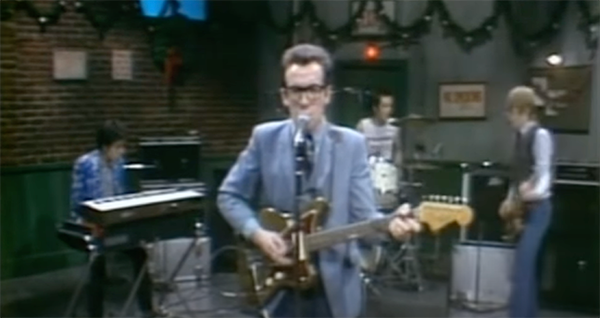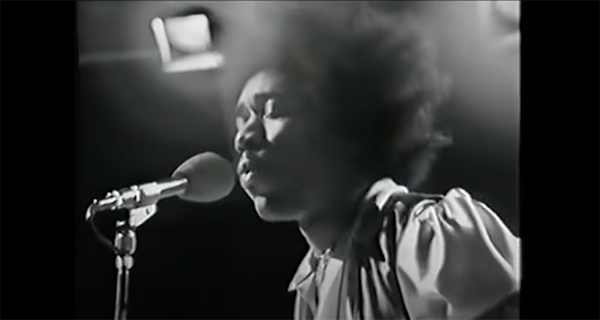Last week I talked about the ways that people have become empowered to create more and find new ways to reach their ideal audience. One writer I know wrote to me with a concern: limited amounts of energy. The idea of creating and sharing more felt concurrently exhilarating and exhausting, and as she considered all the potential, she worried about how much it may deplete her very limited creative energy each week. This, of course, is a common theme with most writers I speak with: they want to preserve their writing energy, while also pursuing ways to connect and share their work with others. At times, that can pull from the same finite well of energy.
So today I would like to talk about the most important resource you have. No, it’s not time. It’s not money. It’s not access. It’s creative energy. And how this leads to what we tend to hope for: that people will discover what we create, be moved by it, and add something special to their lives. Let’s dig in…
Why Energy is Your Most Important Resource
When I wrote about the creator economy last week, underlying it was my excitement at the opportunities people have if they are willing to focus intensely on creating and sharing. For so long, it feels like the most important resources to success were often framed as:
- Time! If you could just get an extra 10 hours, THEN you can create the novel or artwork or project of your dreams.
- Money! If you could just find an extra $5,000, THEN you could attend that inspiring retreat, take that class, buy those supplies, or hire that guide.
- Access! If you could just get connected to someone famous, or someone who knows people, or attended a credentialed program, THEN people would finally become compelled by what you want to share.
Sure, time, money, and access can be very helpful in achieving our creative goals. But I tend to think that creative energy is the most important resource. Why? Because someone can create compelling art even they only have 30 minutes a day to work on it; and someone can languish and not get anything done if they have 10 hours a day to work on it. Likewise, we can squander money, we can misuse the access we have. But creative energy is this resource that amplifies everything.
For years I worked inside a large media company, where 8-10 hours in your little gray cubicle was expected. When I started my company 11 years ago, I noticed something that amazed me. I could get a huge amount of work done each day within 3-4 hours. If I optimized my most creative time of day and removed distractions, I could get so much done in a very short period of time. Gone was the long commute to New York City. Gone was the hour shaving and shining my shoes and packing my bag for 12 hours away from home. Gone were the obligatory meetings or interruptions that prevented me from optimizing my energy.
I remember hearing someone say this last year: “I had always said I would clean out the garage when I had more time. But now that I’m on lockdown, I realize it was never about having enough time.”
Your creative energy and motivation define so much of your potential to create and share. Invest in it. Focus on how to optimize it as much as you try to optimize your time and money. How can you do that? Some ideas…
Invest in Creative Energy
Become a student of your own energy. Track when you have more creative energy during the day and week, and when you don’t. I would encourage you to get out a calendar and note your energy levels for an entire week. So often, someone may default to a response of, “Between work and kids, I have zero energy left.” But when you track it you may note some things.
Perhaps you realize you have a lot of creative energy at a certain time of day. This can open up possibilities of optimizing that time so that you can create more then. For instance, perhaps you are a morning person, but each day you use up that time getting dishes done, lunches made for the kids, and preparing your stuff to leave for work. If that’s the case, could some of this be done the night before? Or could it be offloaded to another member of the family? Or perhaps you find weekdays are non-negotiable, but it opens up the possibility that weekend mornings could become creative time for you.
We all have a limited amount of creative energy in a given day, and we may have multiple priorities pulling from that same reserve. When I speak to full-time writers and artists, I often find that they divide there day up. They take their most creative hours for their most important work. Then, they schedule in breaks, and push other noncreative tasks to different parts of their days.
I do this myself. My mornings are spent writing and doing client work. My afternoons are not as creative, so that is when I schedule my calls. I am much better at reacting and engaging in the afternoons because of this.
A key way to invest in creative energy is to get really clear about your goals. If you want help doing that, check out my Clarity Card exercise. When you stop focusing on things that don’t matter to you, that opens up new reserves of creative energy.
Of course, deadlines can help too. I’m writing this very essay because I’m on deadline. I have sent out a weekly newsletter every Friday for 15 years. Without the deadline, I easily could have justified during every single one of those weeks that my life was too busy to write a newsletter. Work was busy, kids need me, or I have to attend to something else. I’ll be clicking “publish” on this essay in a few minutes because of that deadline. It keeps me creating and sharing.
Challenge Your Assumptions
Too often, writers and artists hold themselves back from pursuing new ideas for how to create and share. They become their own biggest barrier to what they hope to achieve. It’s easy to feel that we know ourselves so well, that we can easily reject new ideas as being untenable, or a bad fit for who we are. But I want to encourage you to challenge your assumptions.
For example, if a week ago you said, “Dan, you should sleep on your back, it’s healthier for you,” I would have shrugged off the suggestion, and given you speech about how I can’t, since I have been a side-sleeper for 48 years. If you challenged me, I would have bet money that I could never sleep an entire night on my back.
But then last weekend my QL muscle went haywire. I had extreme pain on one side of my back, it felt like a knife being shoved into me. Wouldn’t you know it, as I researched a solution, I found that many experts recommend that sleeping on your back is best for a healthy back and relieving strains on muscles and tendons.
For an entire week now, I have slept on my back each night. Suddenly, I’m a back sleeper. And it’s fine. My narrative was wrong. I simply needed the proper motivation. (The pain is gone, by the way, and I also have a new set of daily stretches to ensure my QL will remain healthy.)
Challenge your own assumptions about your creative energy and how you use your time. This can open up your creative process in bold new ways. This will challenge long held assumptions about who you are and what is possible. Honestly, that will be difficult. When presented with a new idea that pushes us outside our comfort zone, it is easy to have a gut reaction saying, “I’m not doing that.” As you look around to consider how to double down on your creative vision, how to truly connect what you create with those who who will care about it, I would encourage you to be open to new ideas.
“But Dan, I just want to write.”
This is the challenge that many writers, artists, and creators have when considering how to share their work. They started to create because something inside them drew them to it. Along the way, they learned to express things in a way they never have before, and in the process, began mastering their craft.
Their lives are busy outside of their craft as well. They may read everything above (and years of archives where I’ve written about this hundreds of times), and say to me, “But Dan, I just want to write.”
You can just write. Just create. Never consider how you publish or share. I 100% support that if this is what you feel is right for you.
But if you hope your work reaches the people who will appreciate it most; If you hope it effects them in some way, helps inspire them, entertain them, educate them, or so much else, then I would encourage you to consider taking control of how you share what you create. Don’t wait for others to do it for you, your ideal audience loves engaging directly with the writer or artist who creates.
You get to choose your own path. And today, there are more paths then ever, more options to choose traditional paths of publishing, or very independent avenues. The other day I was revisiting this video of Elvis Costello appearing on Saturday Night Live:
He begins playing the song, then stops his band. He addresses the audience, “I’m sorry ladies and gentlemen, there is no reason to do this song here.” They then launch into their song, “Radio Radio.” This was an act of defiance, and got him banned from appearing on SNL for more than a decade. “Radio Radio” is a song that talks about how corporations control what you hear, often beholden to their sponsors. It was an artist bemoaning that it was impossible to forge their own path, instead they were constantly editing themselves to fit into what the corporations would allow.
Elvis was inspired to do this by Jimi Hendrix, who years earlier in 1969 was playing a song live on the BBC when he went off script.
He interrupted his own song, saying: “We are going to stop playing this rubbish and dedicate a song to the Cream.” Cream is another band who were announcing their breakup that week, and Jimi played one of their songs. Then, he kept playing, interrupting the BBC schedule.
Today, you don’t have to defy anyone or interrupt a major broadcast in order to be heard. The tools to share your creative vision are all around you. Every day, people wake up and want to be inspired. The question is, will you show up in a manner that feels authentic to who you are, and forge a meaningful interaction with those who would love to hear from you? How can you best tune your own creative energy to make this happen?
Thanks.
-Dan


